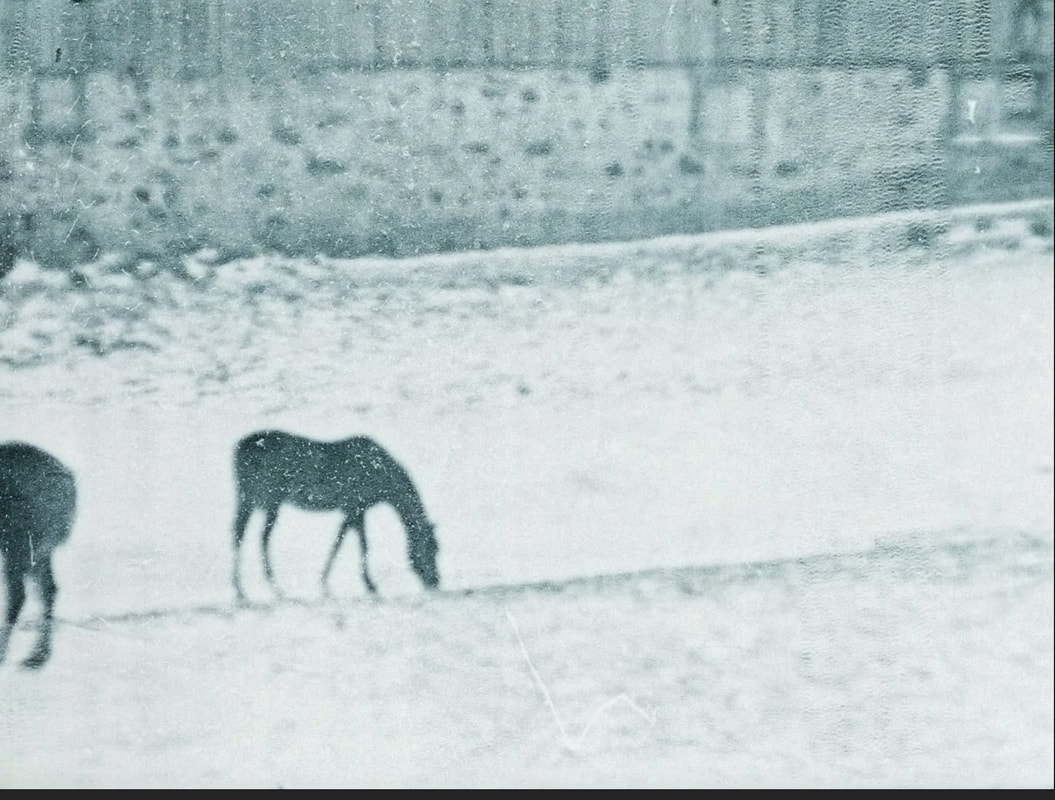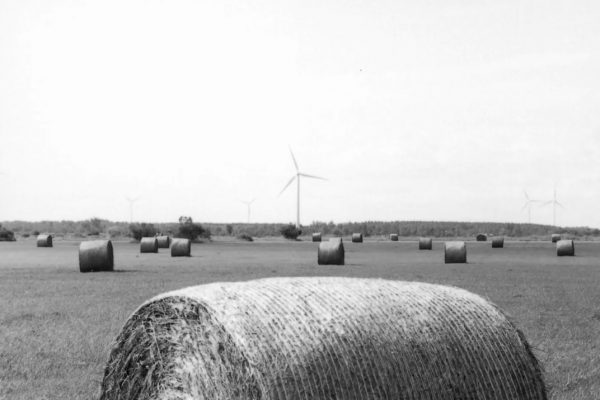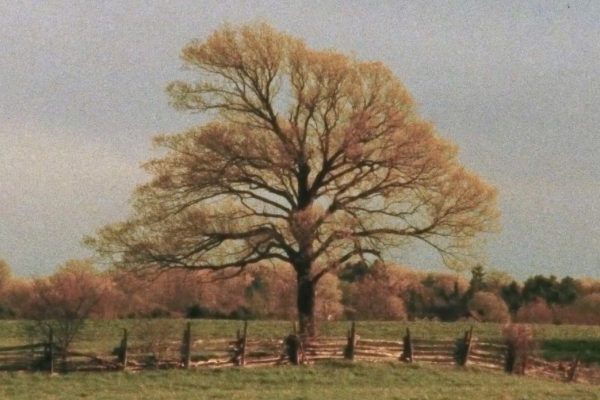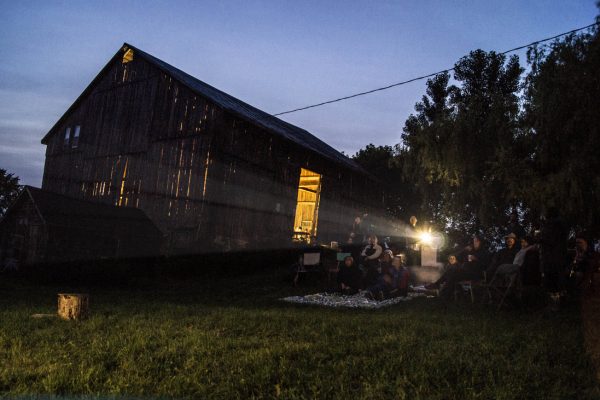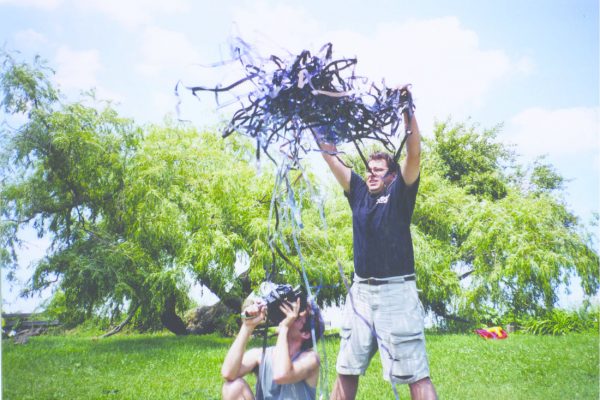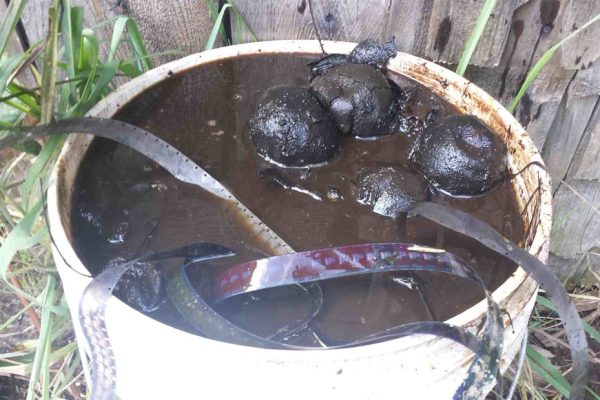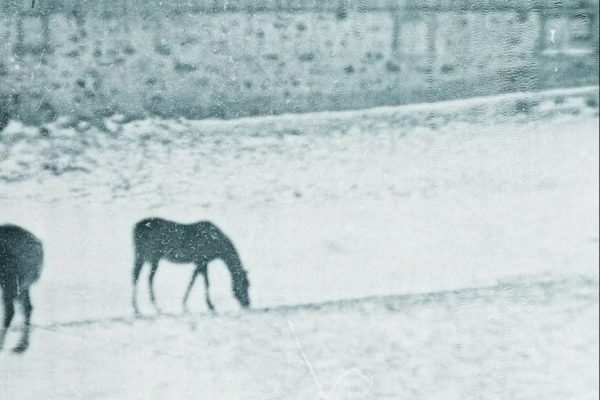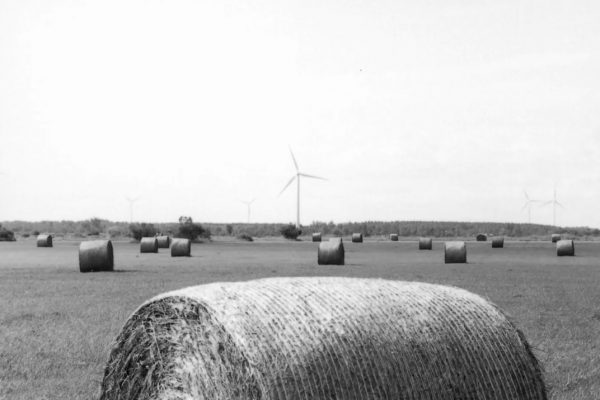Quand | When
05.04.2018 | 20h00
06.04.2018 | 20h00
Où | Where
la lumière collective
7080, rue Alexandra, Montréal [QC]
Média | Media
16mm | projections HD
En présence du cinéaste.
Billets | Tickets
7$ à la porte
“Philip Hoffman’s personal and autobiographical films are eclectic and polyphonic in style. He mixes together still photographs and film, video and celluloid, color and black and white, found footage and home movies, images and writings, voices and telephone conversations.” – Albert Pagán
Né à Kitchener-Waterloo, en Ontario, ce sera l’intérêt que Philip Hoffmanportera à la photographie pendant son enfance qui le mènera au cinéma. En tant qu’historien semi-officiel de la vie de famille, Hoffman se penche sur les questions de la réalité en photographie et, plus tard, au cinéma.
PHILIP HOFFMAN
Né à Kitchener-Waterloo, en Ontario, ce sera l’intérêt que Philip Hoffmanportera à la photographie pendant son enfance qui le mènera au cinéma. En tant qu’historien semi-officiel de la vie de famille, Hoffman se penche sur les questions de la réalité en photographie et, plus tard, au cinéma. Après avoir complété son parcours scolaire formel, qui inclut un diplôme en Arts médiatiques du Collège Sheridan et un baccalauréat en arts, spécialisation littérature, de l’Université Wilfrid Laurier, Hoffman commence à travailler sur ses films tout en enseignant le cinéma et les arts médiatiques faisant appel à des technologies électroniques et informatisées.
Cinéaste de la mémoire et du lien, Philip Hoffman a été reconnu depuis longtemps comme le cinéaste éminent du film-journal au Canada. Apprenti en Europe de Peter Greenaway en 1985, il a réalisé ?O,Zoo! (The Making of a Fiction Film) (1985) qui a été nominé pour le prix Canadian Genie Award. Pour passing through/torn formations (1988), Stan Brakhage reconnaîtra que le processus de montage de Hoffman est fidèle au processus de réflexion, qu’il suit un thème visuel alors que l’esprit retrace la forme, qu’il propose une mélodie de bruits et de mots alors que l’esprit se souvient du son. Plus d’une douzaine de rétrospectives du travail de Hoffman ont été organsiées. Parmi celles-ci, une série principale a été présentée au Festival Images de Toronto en 2001, et, tout à la fois, le livre “Shipwreck: First Person Cinema and the Films of Philip Hoffman” y fut lancé. Le livre recueille une vingtaine d’essais rédigés par des universitaires et artistes. En 2002, Hoffman reçoit le prix Golden Gate Award au Festival International du Film de San Francisco et le prix Gus Van Sant Award du Ann Arbor Film Festival pour son film What These Ashes Wanted, une méditation diaristique sur la perte et le deuil. En 2009, Hoffman présente son long-métrage documentaire expérimental All Fall Down au Festival International du Film de Berlin. Le film propose une réflexion sur l’enfance, la propriété, l’écologie et l’amour. Hoffman complète trois oeuvres en 2014 : Slaughterhouse (réalisé à partir son installation LandSlide présentée au musée Markham) et Aged, qui a gagné des prix au Black Maria Festival (New Jersey) ainsi qu’au Onion City Film Festival (Chicago). De plus, en 2014, Hoffman a participé à l’exposition Border Cultures à la galerie Art Gallery of Windsor où il y présenta un oeuvre interactive intitulée Racing Home (réalisée à partir d’un film incomplet de Marian McMahon) produite à l’aide de A.R.C à l’Université Concordia de Montréal. En 2016, le Docpoint Documentary Film Festival à Helsinki lui dédie une “introspective” composée par cinq programmes rassemblant ses oeuvres et par la présentation d’oeuvres d’étudiants et d’artistes avec qui Hoffman travailla aux courants des années 1990 en Finlande. Depuis 1994, il est le directeur de la retraite de films Independent Imaging Retreat (Film Farm – la Ferme du Film) qui consiste en une semaine d’ateliers sur le film, et les processus artisanaux qui lui sont liés, à Mount Forest en Ontario. En 2016, Hoffman a reçu le prix du Gouverneur Général en Arts visuels et médiatiques.
Born in Kitchener-Waterloo, Ontario, Philip Hoffman’s filmmaking began with his boyhood interest in photography. As semi-official historian of family life, Hoffman became intrigued by questions of reality in photography and later in cinema. After completing his formal education which includes a Diploma in Media Arts at Sheridan College and a Bachelor of Arts in Literature at Wilfrid Laurier University, Hoffman began working on his films, as well as teaching film, electronic and computer-based media in the Media Arts Program at Sheridan College. Currently Hoffman teaches in the Cinema and Media Arts Department at York University.
A film artist of memory and association, Philip Hoffman has long been recognized as Canada’s pre-eminent diary filmmaker. He apprenticed in Europe with Peter Greenaway in 1985, where he made ?O,Zoo! (The Making of a Fiction Film) (1985), which was nominated for a Canadian Genie Award. On passing through/torn formations (1988), Stan Brakhage recognized how “Hoffman’s editing throughout is true to thought process, tracks visual theme as the mind tracks shape, makes melody of noise and words as the mind recalls sound.” Hoffman has been honored with more than a dozen retrospectives of his work. Among them was the centrepiece series at the 2001 Images Festival for Independent Film and Video in Toronto, coupled with the launch of a book titled Landscape with Shipwreck: First Person Cinema and the Films of Philip Hoffman, comprising some 25 essays by academics and artists. As well in 2002 he received the Golden Gate Award from the San Francisco International Film Festival and Gus Van Sant Award from the Ann Arbor Film Festival for What These Ashes Wanted, a diaristic meditation on loss and grief. In 2009 he premiered his feature-length experimental documentary, All Fall Down, at the Berlin International Film Festival. The film is a reflection on childhood, property, ecology and love. Hoffman completed three works in 2014: Slaughterhouse (based on his installation for LandSlide, at the Markham Museum) and Aged, which have won awards at the Black Maria Festival in New Jersey, and Onion City Film Festival in Chicago, respectively. Also in 2014, Hoffman was a participating artist in the exhibition Border Cultures, at the Art Gallery of Windsor, where he presented the interactive work Racing Home (from an unfinished film by Marian McMahon), produced through A.R.C. at Concordia University in Montreal. In 2016 Docpoint Documentary FIlm Festival in Helsinki mounted an “Introspective”, gathering together five programs of Hoffman’s works, along with works of students and artists he was involved with during the 1990’s in Finland. Since 1994, he has been the artistic director of the Independent Imaging Retreat (Film Farm), a 1 week workshop in artisanal filmmaking in Mount Forest, Ontario. In 2016 Hoffman received the Governor General’s Award in Visual and Media Arts.
FILM FARM : A PACT WITH THE PROCESS
[Une sélection d’oeuvres choisies par Philip Hoffman | A Selection of Works programmed by Philip Hoffman]
05.04.2018 | 20h00 | 78 min
Une sélection de films du Independent Imaging Retreat (alias Film Farm), une retraite en Ontario rurale offerte chaque été par le réalisateur expérimental canadien Philip Hoffman et son personnel dévoué. Les nombreux films expérimentaux faits à la main à la Film Farm au cours des 25 dernières années ont inspiré tout autant le travail de cinéastes canadiens que de cinéastes internationaux. Ils ont également grandement influencé la réimagination et l’implémentation de modèles d’enseignement et de production centrés sur les artistes.
Au courant du dernier quart de siècle, le Independent Imaging Retreat ou « Film Farm » a travaillé sur le développement d’une approche pratique et artisanale à la réalisation cinématographique, qui est très loin du modèle industriel coûteux, hiérarchique et inaccessible. Chaque été, un petit groupe de cinéastes intéressés — certains novices, d’autres beaucoup plus expérimentés — se rendent à Mount Forest, Ontario, afin de participer à une semaine intensive de tournage, de traitement à la main, de teinture, de visionnement et de montage. La majorité de ce processus a lieu à l’intérieur et aux alentours d’une vieille grange sur la propriété Normanby Township, en Ontario rural.
Films from the Independent Imaging Retreat (aka. Film Farm) offered in rural Ontario every summer by Canadian experimental filmmaker Philip Hoffman and his dedicated staff. Film Farm’s near 25 years of handmade experimental filmmaking have deeply influenced the work of both Canadian and international filmmakers and have dramatically influenced the re-imagining and implementation of artist-centered models for the teaching and production of film.
For almost 25 years the Independent Imaging Retreat or ‘Film Farm’ has been developing a hands-on, artisanal approach to filmmaking that is far removed from the costly, hierarchical and inaccessible industrial model. Each summer it brings to Mount Forest, Ontario a small group of interested filmmakers – some novices and some highly experienced – for an intensive week of shooting, hand-processing, tinting/toning, watching and editing film – most of the action taking place in and around an old barn on the Normanby Township property, in rural Ontario..
- STILL FILM PORTRAIT #1
- UNTITLED
- HARDWOOD PROCESS
- YOUR NEW PIG IS DOWN THE ROAD
- CHICKEN FILM
- HAPPY BIRTHDAY
- A DAY IN THE SHINT
- KISS
- DEMI MONDE
- BEFORE
- CASA DE LA NOCHE
- CICATRIX
- STRAWBERRIES IN THE SUMMERTIME
Michele Pearson Clarke | 2016 | 16mm | silent | 2min
Une expérience formelle, Still Film Portrait #1 prolonge mes recherches sur la relation entre les techniques analogues, l’affect et la visualité noire. En prenant en compte les relations problématiques historiques que la photographie et le film ont avec les enjeux de race et de représentation, j’ai créé à la Film Farm un auto-portrait analogue contemporain engagé qui soulève les questions de la masculinité chez la femme, à l’être Queer et à la représentation visuelle du noir sur le film.
A formal experiment, Still Film Portrait #1 extends my exploration of the relationship between analogue techniques, affect and black visuality. Considering the problematic historical relationships that both photography and film have with issues of race and representation, I used my time at Film Farm to create an analogue self-portrait in an attempt at a contemporary engagement with questions of female masculinity, queerness and the visual representation of blackness on film
Matt Soar | 2009 | 16mm to DV | silent | 2min
Un court film d’observation réalisé à l’aide d’une Bolex et développé à la main à la Film Farm; transfert numérique réalisé par Technicolor (Montréal); monté avec Final Cut Express.
A short observational film on a Bolex and hand processed at the Film Farm; digital transfer by Technicolor (Montréal); edited in Final Cut Express.
David Gatten | 1997 | 16mm | silent | 14min
Une histoire de surfaces meurtries, une enquête et un imaginaire : pour les marques que nous voyons et celles que nous faisons, pour les languages que nous pouvons lire et ceux que nous essayons d’apprendre. Reproduit à la main par tirage contact donnant pour résultat des copies uniques.
A history of scarred surfaces, an inquiry, and an imagining: For the marks we see and the marks we make, for the languages we can read and for those we are trying to learn. Reproduced by hand on an old contact printer resulting in individual, unique release prints.
Helen Hill | 1999 | 16mm to DV | silent | 4min
Your New Pig Is Down the Road est une lettre d’amour cinétique au mari de Hill, Paul Gailiunas, qu’elle a filmé pendant l’été en Ontario à la Film Farm de Phil Hoffman. Hill fait signe à Paul Gailiunas de la suivre au bout de la route où le nouveau cochon de Paul l’attend. Le film révèle leurs marguerites tant aimées, leur très respecté Saint Francis et leur bébé cochon Daisy. Après leur mariage, Paul Gailiunas et Helen Hill avait pour animal de compagnie un cochon vietnamien, Rosie, en Nouvelle Orléans.
Your New Pig Is Down the Road is a cinematic love letter to Hill’s husband Paul Gailiunas which she filmed during a summer in Ontario at Phil Hoffman’s Film Farm. Hill beckons Paul Gailiunas to follow her down the road where Paul’s new pig waits. The film features their much loved daisies, their much respected Saint Francis, and their baby pig Daisy. After they were married, Paul Gailiunas and Helen Hill kept a pot bellied pig in New Orleans which they named Rosie.
“One day Helen, Amy Lockhart and Trixie Sweetvittles went to shoot some film at the Hoffman Exotic Animals Farm, which was just down the road, but those Hoffmans were not related to Phil Hoffman. They had a potbellied pig named Sophie with five or six new-born piglets, and Paul had wanted a pet pig for years, so Helen shot some film of them and bought one of them for him, for $50. Paul named his piglet Daisy Mae Hoffman, after Phil, but when Helen told the name to the Exotic Animals Hoffmans, she sensed that they were offended that she may have named her pig after them. But they had a zebra named Michael Jackson!”– [John Porter]
Rob Butterworth | 2015 | 16mm | sound | 4min
Lumière et ombre sous le saule pleureur, un lieu chargé de souvenirs. Les volailles picorent. Lexie à la guitare. Une seule bobine de 100 pieds tournée, développée à la main et exposée au toner en après-midi. Un moment lumineux auquel la lumière du projecteur redonne vie dans la ferme cette nuit-là. Un moment que je tiens dans ma main. Un moment qui a seulement besoin d’être exposé à la lumière pour être partagé.
Light and shadow under the willow tree swell with memories of this place. Foraging chickens. Lexie on guitar. A single 100 foot roll shot, hand processed and toned that afternoon. A bright moment back to life through a projector bulb in the barn that night. A moment I hold in my hand. A moment needing only to be held up to the light to be shared.
Monika Kin Gagnon | 2016 | 16mm | sound | 6mins
Happy Birthday a été créé à partir de cassettes, nouvellement trouvées, de ma fête d’anniversaire en 1970. En fond sonore, on peut entendre le moteur d’une caméra 16mm qui se met en marche et qui s’arrête alors que mon père me demande de marquer les “prises” sur un film qui a aussi été trouvé, mais qui n’avait jamais été développé, aux images donc perdues. Perdues et refaites, 40 ans plus tard. Le film documente le fastidieux processus de démanteler et réassembler un montage de “found footage” en pellicule 16 mm. Le collage de la pellicule imite les fonctions d’un rideau, tandis qu’on documente par bande optique la destruction subséquente du film durant sa première projection.
Happy Birthday was created using a newly-found cassette recording from my 1970 birthday party. One hears a 16mm camera motor starting and stopping in the background as my father directs me to mark the “takes” in a film that was also found, but had never been developed, and whose images were thereby lost. Lost and re-made, 40 years later.
Clint Enns | 2013 | 16mm | sound | 2min
En 2009, la facilitatrice à la Film Farm, Deirdre Logue, mis en place un seau où les chimies, toners et colorants usés pouvaient y être déversés : elle le nomma “The Shint”. En 2013, Clint Enns a mis sa pellicule dans le seau pour une journée. La cuvée de “shint” 2009 fut une particulièrement bonne année.
In 2009 Film Farm facilitator Deirdre Logue established a pail that exhausted chemistries, toners & tints etc could be thrown into and she named it `the Shint’. In 2013, Clint Enns put his footage into the bucket for a day. The 2009 vintage of `shint’ was a particularily good year.
Lindsay Bloom | 2012 | 16mm to DV | sound | 1 min
Explorations intimes sous l’eau.
Intimate explorations under water.
Caroline Monnet | 2013 | 16mm to DV | sound | 3min
Un monde distinct – qui consiste souvent en une partie d’un monde bien plus grand – est viscéralement imaginé dans cette oeuvre expressive.
A distinct world—which is often an isolated part of a larger world—is viscerally envisioned in this expressive work.
Cecilia Araneda | 2016 | 16mm to DV | sound | 4mins
Réalisé avec film 16 mm peint et teint à main, Auparavant est une ode sombre à la possibilité et l’impossibilité de l’amour. Il réfléchit sur le temps, les mondes intérieurs et les atterrissages en douceur que nous trouvons dans les moments désolées en la vie. – [Cecilia Araneda]
With intricate hand-printed 16 mm footage, Before is a dark ode to the possibility and impossibility of love. It reflects on time, inner worlds and soft landings we find in desolate moments in life.
Marcel Beltrán | 2016 | 16mm to DV | sound | 13min
La Havane nocturne, une ville enracinée dans l’âme des habitants. Le réalisateur Marcel Beltrán offre une vision utopique, inspirée par la ville et tout ce qu’elle représente, en travaillant le celluloid et en le laissant se désintégrer. La narration est celle de son père lors de ses derniers jours sur cette terre : le film révèle les souvenirs d’une vie vécue dans la ville de la nuit.
Nocturnal Havana, a city rooted in the souls of its inhabitants. Director Marcel Beltrán offers a utopian vision, inspired by the city and everything it stands for, by preparing celluloid and letting it disintegrate. Narrated by his father, during the last days of his life, the film reveals the memories of a life lived, in the city of night.
Jeremy Moss | 2014 | 16mm to DV | sound | 7 min
Une expérience de strates, marques et détérioration. L’image suinte, se déchire, bouillonne, imite les impulsions tout à la fois de création et de destruction.
An experience in layers, scars, and deterioration. The image oozes, rips, and bubbles, emulating both creationist and destructive impulses.
Jennifer Reeves | 2013 | 16mm to DV | sound | 16 min
Un jeune garçon de deux et demi se réjouit à la vue des petites et énormes choses qui se trouvent à la ferme. Son père soutient sa curiosité exubérante et insatiable pour de nouvelles expériences – de grimper au mur à la découverte de la nature. Alors que le lien père-fils grandit, la mère à la caméra observe, prend du recul, plonge dans un paysage solitaire et revient. Le champ visuel éphémère et éclatant évoque la tension délicate entre la distance et l’intimité que peut ressentir une mère envers son enfant. Des images en noir & blanc positives, négatives, solarisées au ton riche combinées à des bribes de voix renvoient à la texture de la mémoire.
A two and a half year old boy revels in all things tiny and huge on and around a farm. His father supports his exuberant and insatiable curiosity of new experiences– from wall climbing to discovering the natural world. As a father-son bond grows, the mother with camera observes, hangs back, dives into a solitary landscape and returns. The fleeting and glowing visual field evokes the delicate tension between distance and intimacy a mother can feel with her child. Richly toned black and white positive, negative and solarized images, combined with snippets of voice, suggest the texture of memory.
SLAUGHTERHOUSE + VULTURE
[Une sélection d’oeuvres réalisées par Philip Hoffman | A Selection of Works by Philip Hoffman]
06.04.2018 | 20h00 | 75 min
2014 | HDV/ORIG on 16mm | sound | 15 min
L’oeuvre aux écrans multiples tisse divers liens inter-connectés liés à la perte: de la terre et de l’agriculture, de la propriété et de l’entreprise. Les matériaux d’archive dans l’oeuvre sont tirés de matériaux personnels et publics, tel que l’histoire de l’activiste autochtone Nahnebahwequay (1824-65) retrouvée à Archives Nationales du Canada et, plus récemment, les extraits tirés de Farmer’s Advocate and Family Herald publications 1958-1968, et ceux liés à l’essor et au déclin de l’usine d’abattage et de découpe de porc Hoffman Meets (1951-81) à Kitchener, en Ontario.
This multi-framed work weaves several inter-connected threads of loss: of land and agriculture, of property and business. The archival materials in the work have been gleaned from public and personal sources such as the National Archive of Canada, in the story of a nineteenth century aboriginal woman and land rights activist Nahnebahwequay (1824-65) and more recently organic farmer Michael Schmidt, from excerpts of the Farmer’s Advocate and Family Herald publications 1958-1968, also a trip into the artist’s familial past, and the rise and fall of his family’s slaughterhouse and pork processing plant, Hoffman Meats (1951-81), in Kitchener, Ontario.
Live music / Musique en direct | In process | 16mm to DV | sound | colour & b&w | 60 min
Les vautours planent bien au dessus de la grange, armés de leur vision aiguisée et de leur sens de l’odorat tout aussi développé. Ensemble, ils guettent et partagent leur nourriture en état de décomposition. L’acide puissant de leur estomac leur permet de digérer de grandes quantités de proies mortes sans que cela ne les rende malades.
Le vautour pose son regard sur les animaux de la ferme et leur flore avoisinante. Des images fixes et de lents zooms suivent les animaux de pâturage dans leurs échanges inter-espèces momentanés. Lorsque laissés à errer ensemble, les sensibilités des ces “bêtes” font surface.
Le film a été tourné et développé à partir de fleurs et de plantes de mai 2016 jusqu’en février 2018. Du sel a été utilisé pour fixé le film qui a trempé dans la mixture pendant 3 jours dans le noir.
Trame sonore en direct par Kennedy.
Vultures hover over the barn, from high, with razor sharp eyesight, and a keen sense of smell. Together, they stalk and share their decaying sustenance. Intense acid in their stomach allows them to digest great quantities of their dead prey, without falling ill.
Vulture sets its sight on farm animals and their surrounding flora. Static shots and slow moving zooms, follow the grazing animals in their minute inter-species exchanges. When left to roam together the sensibilities of these “beasts” are allowed to surface.
This film was shot and flower/plant processed from May 2016 to February 2018. Salt was used for fixing the film which was left soaking in the dark for 3 days.
Live soundtrack by Kennedy.
Translation to French © Emma Roufs



